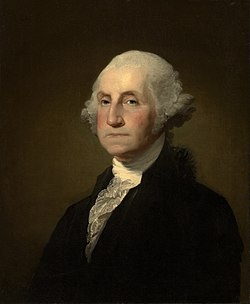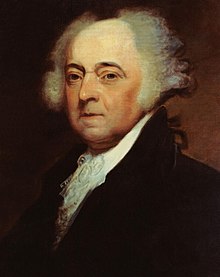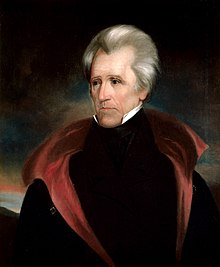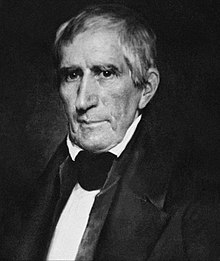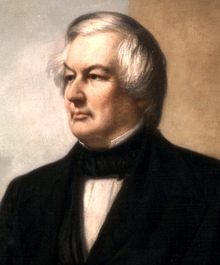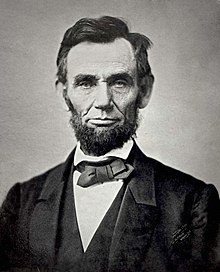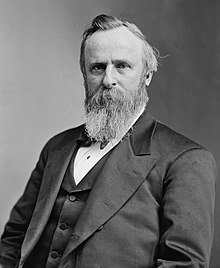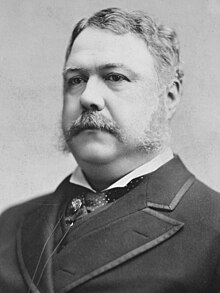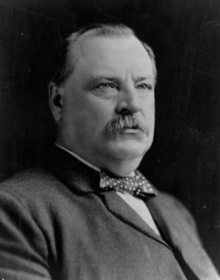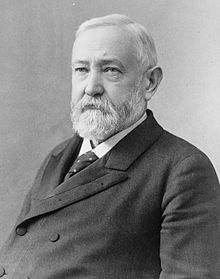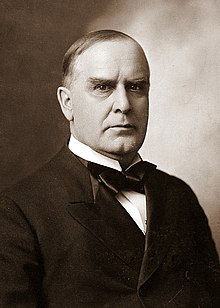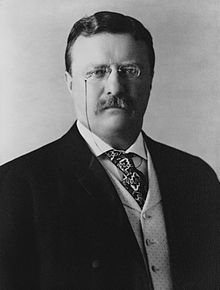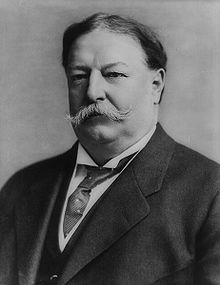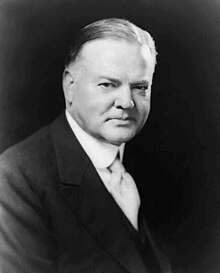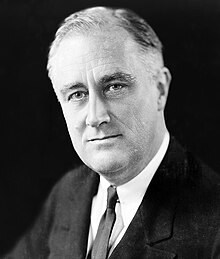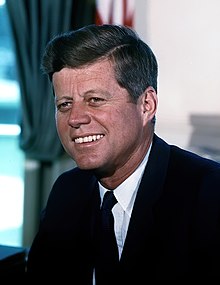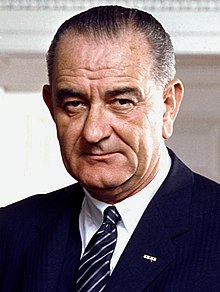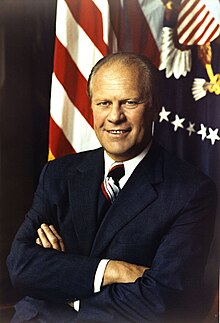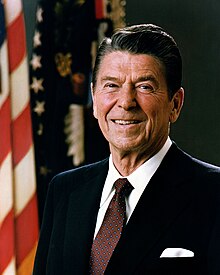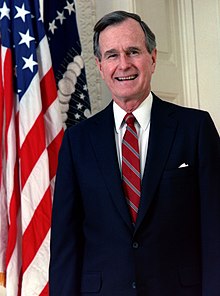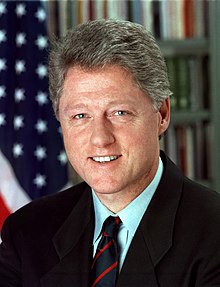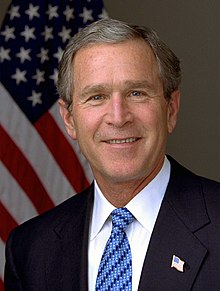James Knox Polk (
November 2, 1795 – June 15, 1849) was the
11th President of the United States (1845–1849). Polk was born in
Mecklenburg County,
North Carolina. He later lived in and represented
Tennessee. A
Democrat, Polk served as the 17th
Speaker of the House of Representatives (1835–1839) and
Governor of Tennessee (1839–1841). Polk was the surprise ("
dark horse") candidate for president in 1844, defeating
Henry Clay of the rival
Whig Party by promising to annex
Texas. Polk was a leader of
Jacksonian Democracy during the
Second Party System.
Zachary Taylor (November 24, 1784 – July 9, 1850) was the
12th President of the United States (1849–1850) and an
American military leader. Initially uninterested in politics, Taylor nonetheless ran as a
Whig in the
1848 presidential election, defeating
Lewis Cass. Taylor was the last President to
hold slaves
while in office, and the second and also last Whig to win a
presidential election. He was the second president to die in office,
following
William Henry Harrison, who had died nine years earlier.Known as "Old Rough and Ready," Taylor had a forty-year military career in the
United States Army, serving in the
War of 1812, the
Black Hawk War, and the
Second Seminole War. He achieved fame leading American troops to victory in the
Battle of Palo Alto and the
Battle of Monterrey during the
Mexican–American War. As president, Taylor angered many Southerners by taking a moderate stance on the issue of slavery. He urged settlers in
New Mexico and
California to bypass the territorial stage and draft
constitutions for
statehood, setting the stage for the
Compromise of 1850. Taylor died just 16 months into his term, the third shortest tenure of any President. He is thought to have died of
gastroenteritis. Only Presidents
William Henry Harrison and
James Garfield served less time. Taylor was succeeded by his
Vice President,
Millard Fillmore.
Millard Fillmore (January 7, 1800 – March 8, 1874) was the
13th President of the United States (1850–1853) and the last member of the
Whig Party to hold the office of president. As
Zachary Taylor's
Vice President, he assumed the presidency after Taylor's death.Fillmore opposed the proposal to keep
slavery out of the territories annexed during the
Mexican–American War (to appease the South), and so supported the
Compromise of 1850, which he signed, including the
Fugitive Slave Act (
"Bloodhound Law") which was part of the compromise. On the foreign policy front, he furthered the rising trade with
Japan and clashed with the French over
Napoleon III's attempt to annex
Hawaii, and with the French and the British over the attempt of
Narciso López to invade
Cuba. After his presidency, he joined the
Know-Nothing movement; throughout the
Civil War, he opposed
President Lincoln and during
Reconstruction supported
President Johnson.
Franklin Pierce (November 23, 1804 – October 8, 1869) was the
14th President of the United States (1853–1857) and is the only President from
New Hampshire. Pierce was a
Democrat and a "
doughface" (a Northerner with Southern sympathies) who served in the
U.S. House of Representatives and the
Senate. Pierce took part in the
Mexican-American War and became a
brigadier general in the Army. His private
law practice in his home state,
New Hampshire,
was so successful that he was offered several important positions,
which he turned down. Later, he was nominated as the party's candidate
for president on the 49th ballot at the
1852 Democratic National Convention.
In the
presidential election, Pierce and his running mate
William R. King won by a
landslide in the
Electoral College. They defeated the
Whig Party ticket of
Winfield Scott and
William A. Graham by a 50 percent to 44 percent margin in the popular vote and 254 to 42 in the
electoral vote.
James Buchanan, Jr. (April 23, 1791 – June 1, 1868,
English pronunciation: /bjuːˈkænən/) was the
15th President of the United States (1857–1861). He is the only president from
Pennsylvania and the only president who remained a lifelong bachelor. His niece
Harriet Lane played the role as lady of the house.Buchanan (often called
Buck-anan by his contemporaries) was a popular and experienced state politician and a successful attorney before his presidency.
He represented Pennsylvania in the U.S.
House of Representatives and later the
Senate, and served as
Minister to Russia under President
Andrew Jackson. He was also
Secretary of State under President
James K. Polk. After turning down an offer for an appointment to the
Supreme Court, President
Franklin Pierce appointed him
Minister to the United Kingdom, in which capacity he helped draft the controversial
Ostend Manifesto.
Abraham Lincoln(February 12, 1809 – April 15, 1865) was the
16th President of the United States, serving from March 1861 until
his assassination in April 1865. He successfully led his country through a great constitutional, military and moral crisis – the
American Civil War
– preserving the Union, while ending slavery, and promoting economic
and financial modernization. Reared in a poor family on the western
frontier, Lincoln was mostly self-educated. He became a country lawyer,
an
Illinois state legislator, and a one-term member of the
United States House of Representatives, but failed in two attempts to be elected to the
United States Senate.
Andrew Johnson (December 29, 1808 – July 31, 1875) was the
17th President of the United States (1865–1869). As Vice President of the United States in 1865, he succeeded
Abraham Lincoln following the latter's
assassination. Johnson then presided over the initial and contentious
Reconstruction era of the United States following the
American Civil War. Johnson's reconstruction policies failed to promote the rights of the
Freedmen, and he came under vigorous political attack from
Republicans, ending in his impeachment by the U.S. House of Representatives, though it failed in the U.S. Senate.
Ulysses S. Grant (born
Hiram Ulysses Grant; April 27, 1822 – July 23, 1885) was the
18th President of the United States (1869–1877) following his dominant role in the second half of the
Civil War. Under Grant, the
Union Army defeated the
Confederate military and effectively ended the war with the surrender of
Robert E. Lee's army at Appomattox. As President he led the
Radical Republicans in their effort to eliminate all vestiges of Confederate nationalism and slavery; he effectively destroyed the
Ku Klux Klan
in 1871. His reputation was marred by his repeated defense of corrupt
appointees, and by the deep economic depression (called the "
Panic of 1873") that dominated his second term. Although his
Republican Party
split in 1872 with reformers denouncing him, Grant was easily
reelected. By 1874, however, the opposition was gaining strength and as
he left the White House in March 1877, conservative white southerners
regained control of every state in the South and Reconstruction ended on
a note of failure as the civil rights of blacks were not secure.
Rutherford Birchard Hayes (October 4, 1822 – January 17, 1893) was the
19th President of the United States (1877–1881). As president, he oversaw the end of
Reconstruction and the United States' entry into the
Second Industrial Revolution.
Hayes was a reformer who began the efforts that would lead to civil
service reform and attempted, unsuccessfully, to reconcile the divisions
that had led to the
American Civil War fifteen years earlier.Born in
Delaware, Ohio, Hayes practiced law in Lower Sandusky (now
Fremont) and was city solicitor of
Cincinnati from 1858 to 1861. When the Civil War began, Hayes left a successful political career to join the
Union Army. Wounded five times, most seriously at the
Battle of South Mountain, he earned a reputation for bravery in combat and was promoted to the rank of
major general. After the war, he served in the
U.S. Congress from 1865 to 1867 as a
Republican. Hayes left Congress to run for
Governor of Ohio
and was elected to two terms, serving from 1867 to 1871. After his
second term had ended, he resumed the practice of law for a time, but
returned to politics in 1875 to serve a third term as governor.
James Abram Garfield (November 19, 1831 – September 19, 1881) served as the
20th President of the United States, after completing nine consecutive terms in the
U.S. House of Representatives.
Garfield's accomplishments as President included a controversial
resurgence of Presidential authority above Senatorial courtesy in
executive appointments; energizing U.S. naval power; and purging
corruption in the Post Office Department. Garfield made notable
diplomatic and judiciary appointments, including a
U.S. Supreme Court justice. Garfield appointed several African-Americans to prominent federal positions.
Chester Alan Arthur (October 5, 1829 – November 18, 1886) was the
21st President of the United States (1881–1885). Becoming President after
the assassination of President
James A. Garfield, Arthur struggled to overcome suspicions of his beginnings as a politician from the New York City
Republican machine, succeeding at that task by embracing the cause of civil service reform. His advocacy for, and enforcement of, the
Pendleton Civil Service Reform Act was the centerpiece of his administration.
Stephen Grover Cleveland (March 18, 1837 – June 24, 1908) was the
22nd and 24th President of the United States.
Cleveland is the only president to serve two non-consecutive terms
(1885–1889 and 1893–1897) and therefore is the only individual to be
counted twice in the numbering of the presidents. He was the winner of
the
popular vote for president three times—in
1884,
1888, and
1892—and was the only
Democrat elected to the presidency in the era of
Republican political domination that lasted from 1861 to 1913.
Benjamin Harrison (August 20, 1833 – March 13, 1901) was the
23rd President of the United States (1889–1893). Harrison, a grandson of President
William Henry Harrison, was born in
North Bend, Ohio, and moved to
Indianapolis, Indiana at age 21, eventually becoming a prominent politician there. During the
American Civil War, he served the Union as a
Brigadier General in the
XX Corps of the
Army of the Cumberland. After the war he unsuccessfully ran for the governorship of
Indiana, and was later appointed to the
U.S. Senate from that state.
William McKinley (born
William McKinley, Jr.; January 29, 1843 – September 14, 1901) was the
25th President of the United States, serving from March 4, 1897 until his death. The third American president
to be assassinated, McKinley led the nation to victory in the
Spanish-American War, instituted
protective tariffs to encourage American industry, and formally placed the nation on the
gold standard. His victory in the
1896 presidential election, generally deemed a
realigning election, began a period of over a third of a century dominated by the
Republican Party.
Theodore "'Teddy" Roosevelt (October 27, 1858 – January 6, 1919) was0 the
26th President of the United States of America (1901–1909). He is noted for his exuberant personality, range of interests and achievements, and his leadership of the
Progressive Movement, as well as his "
cowboy" persona and robust
masculinity.
He was a leader of the
Republican Party and founder of the short-lived
Progressive ("Bull Moose") Party of 1912.
Before becoming President, he held offices at the city, state, and
federal levels. Roosevelt's achievements as a naturalist, explorer,
hunter, author, and soldier are as much a part of his fame as any office
he held as a politician.
William Howard Taft (September 15, 1857 – March 8, 1930) was the
27th President of the United States (1909–1913) and later the tenth
Chief Justice of the United States (1921–1930). He is the only person to have served in both offices, and along with
James Polk, the only president to have also headed another branch of the
federal government.Before becoming President, Taft was selected to serve on the
Ohio Supreme Court in 1887. In 1890, Taft was appointed
Solicitor General of the United States and in 1891 a judge on the
United States Court of Appeals for the Sixth Circuit. In 1900, President
William McKinley appointed Taft
Governor-General of the Philippines. In 1904, President
Theodore Roosevelt appointed Taft
Secretary of War
in an effort to groom Taft, then his close political ally, into his
handpicked presidential successor. Taft assumed a prominent role in
problem solving, assuming on some occasions the role of acting Secretary
of State, while declining repeated offers from Roosevelt to serve on
the Supreme Court.
Thomas Woodrow Wilson (December 28, 1856 – February 3, 1924) was the
28th President of the United States, from 1913 to 1921. A leader of the
Progressive Movement, he served as
President of
Princeton University from 1902 to 1910, and then as the
Governor of New Jersey from 1911 to 1913. Running against
Progressive ("Bull Moose") Party candidate
Theodore Roosevelt and
Republican candidate
William Howard Taft, Wilson was
elected President as a
Democrat in 1912. In his first term as President, Wilson persuaded Democratic
Congress to pass major progressive reforms. Historian
John M. Cooper
argues that, in his first term, Wilson successfully pushed a
legislative agenda that few presidents have equaled, and remained
unmatched up until the
New Deal.
This agenda included the
Federal Reserve Act,
Federal Trade Commission Act, the
Clayton Antitrust Act, the
Federal Farm Loan Act and an
income tax.
Child labor was curtailed by the
Keating–Owen Act of 1916, but the
U.S. Supreme Court declared it unconstitutional in 1918. He also had Congress pass the
Adamson Act, which imposed an 8-hour workday for railroads.
Wilson, after first sidestepping the issue, became a major advocate for the
women's suffrage.
Warren Gamaliel Harding (November 2, 1865 – August 2, 1923) was the
29th President of the United States (1921–23). A
Republican from Ohio, Harding was an influential self-made newspaper publisher. He served in the
Ohio Senate (1899–1903), as the
28th Lieutenant Governor of Ohio (1904–06) and as a U.S. Senator (1915–21). He was also the first incumbent
United States Senator and the first newspaper publisher to be elected President.
John Calvin Coolidge, Jr. (July 4, 1872 – January 5, 1933) was the
30th President of the United States (1923–1929). A
Republican lawyer from
Vermont, Coolidge worked his way up the ladder of
Massachusetts state politics, eventually becoming
governor of that state. His conduct during the
Boston Police Strike
of 1919 thrust him into the national spotlight and gave him a
reputation as a man of decisive action. Soon after, he was elected as
the
29th Vice President in 1920 and succeeded to the Presidency upon the sudden death of
Warren G. Harding in 1923. Elected in his own right in 1924, he gained a reputation as a small-government
conservative, and also as a man who said very little.
Herbert Clark Hoover (August 10, 1874 – October 20, 1964) was the
31st President of the United States (1929–33). Hoover was originally a professional
mining engineer and author. As the
United States Secretary of Commerce in the 1920s under Presidents
Warren Harding and
Calvin Coolidge, he promoted partnerships between government and business under the rubric "economic modernization". In
the presidential election of 1928, Hoover easily won the
Republican nomination,
despite having no previous elected office experience. Hoover is the
most recent cabinet secretary to be elected President of the United
States, as well as one of only two Presidents (along with
William Howard Taft)
to have been elected without previous electoral experience or high
military rank. America was prosperous and optimistic at the time,
leading to a landslide victory for Hoover over Democrat
Al Smith.
Franklin Delano Roosevelt (
January 30, 1882 – April 12, 1945), also known by his initials,
FDR, was the
32nd President of the United States (1933–1945) and a central figure in world events during the mid-20th century, leading the
United States during a time of worldwide
economic crisis and
world war.
The only American president elected to more than two terms, he
facilitated a durable coalition that realigned American politics for
decades. With the bouncy popular song "
Happy Days Are Here Again" as his campaign theme, FDR defeated
incumbent Republican
Herbert Hoover in
November 1932, at the depth of the
Great Depression. FDR's persistent optimism and activism contributed to a renewal of the national spirit
. reflecting his victory over
paralytic illness to become the longest serving president in U.S. history. He worked closely with
Winston Churchill and
Joseph Stalin in leading the Allies against Germany and Japan in
World War II, but died just as victory was in sight.
Harry S. Truman (May 8, 1884 – December 26, 1972) was the
33rd President of the United States (1945–1953). As President
Franklin D. Roosevelt's third vice president and the
34th Vice President of the United States
(1945), he succeeded to the presidency on April 12, 1945, when
President Roosevelt died less than three months after beginning his
unprecedented fourth term.During
World War I,
Truman served in combat in France as an artillery officer in his
National Guard unit. After the war, he joined the Democratic Party
political machine of
Tom Pendergast in
Kansas City, Missouri. He was elected a county official and in 1934
United States senator. After he had gained national prominence as head of the wartime
Truman Committee, Truman replaced vice president
Henry A. Wallace as Roosevelt's running mate in 1944.
Dwight David "
Ike"
Eisenhower (October 14, 1890 – March 28, 1969) was the
34th President of the United States from 1953 until 1961. Prior to that he was a
five-star general in the
United States Army. During
World War II, he served as
Supreme Commander of the
Allied Forces in Europe; he had responsibility for planning and supervising the invasion of
North Africa in
Operation Torch in 1942–43 and the successful
invasion of France and
Germany in 1944–45, from the
Western Front. In 1951, he became the first
supreme commander of NATO. Eisenhower was of Pennsylvania Dutch ancestry, and was reared in a
large family in Kansas, by parents with a robust work ethic and
religious background. As one of five sons, he was conditioned by a
competitive atmosphere requiring self-reliance. He was admitted to, and
graduated from,
West Point, and later was married with two sons. After World War II Eisenhower served as Chief of Staff under President
Harry S. Truman, then assumed the post of President at
Columbia University.
John Fitzgerald "
Jack"
Kennedy  pronunciation (help·info)
pronunciation (help·info) (May 29, 1917 – November 22, 1963), often referred to by his initials
JFK, was the
35th President of the United States, serving from 1961 until
his assassination in 1963. After military service as
commander of the
Motor Torpedo Boats PT-109 and
PT-59 during World War II in the
South Pacific, Kennedy represented
Massachusetts's 11th congressional district in the
U.S. House of Representatives from 1947 to 1953 as a
Democrat. Thereafter, he served in the
U.S. Senate from 1953 until 1960. Kennedy defeated then Vice President and Republican candidate
Richard Nixon in the
1960 U.S. presidential election. He was the youngest elected to the office, at the age of 43,
the second-youngest President (after
Theodore Roosevelt), and the first president to have been born in the 20th century.
Kennedy is the only
Catholic president, and is the only president to have won a
Pulitzer Prize.
Events during his presidency included the
Bay of Pigs Invasion, the
Cuban Missile Crisis, the building of the
Berlin Wall, the
Space Race, the
African American Civil Rights Movement, and early stages of the
Vietnam War.
Lyndon Baines Johnson (August 27, 1908 – January 22, 1973), often referred to as
LBJ, was the
36th President of the United States (1963–1969), a position he assumed after his service as the
37th Vice President of the United States (1961–1963). He is one of only four people
who served in all four elected federal offices of the United States: Representative, Senator, Vice President, and President.
Johnson, a
Texas Democrat, served as a
United States Representative from 1937–1949 and as a
Senator from 1949–1961, including six years as
United States Senate Majority Leader, two as Senate Minority Leader and two as
Senate Majority Whip. After campaigning unsuccessfully for the Democratic nomination in 1960, Johnson was asked by
John F. Kennedy to be his
running mate for the
1960 presidential election.
Richard Milhous Nixon (January 9, 1913 – April 22, 1994) was the
37th President of the United States, serving from 1969 to 1974. The only president to resign the office, Nixon had previously served as a US
representative and
senator from California and as the
36th Vice President of the United States from 1953 to 1961.
Gerald Rudolph "
Jerry"
Ford, Jr. (born
Leslie Lynch King, Jr.; July 14, 1913 – December 26, 2006) was the
38th President of the United States, serving from 1974 to 1977, and the
40th Vice President of the United States serving from 1973 to 1974. As the first person appointed to the vice-presidency under the terms of the
25th Amendment (after
Spiro Agnew had resigned), when he became President upon
Richard Nixon's
resignation on August 9, 1974, he became the only President of the
United States who was never elected President nor Vice-President by the
Electoral College. Before ascending to the vice-presidency, Ford served nearly 25 years as the
Representative from
Michigan's 5th congressional district, eight of them as the
Republican Minority Leader.
James Earl "Jimmy" Carter, Jr. (born October 1, 1924) is an American politician who served as the
39th President of the United States (1977–1981) and was the recipient of the 2002
Nobel Peace Prize,
the only U.S. President to have received the Prize after leaving
office. Before he became President, Carter served as a U.S. Naval
officer, was a peanut farmer, served two terms as a
Georgia State Senator and one as
Governor of Georgia (1971–1975). During Carter's term as President, two new cabinet-level departments were created: the
Department of Energy and the
Department of Education. He established a
national energy policy that included conservation, price control, and new technology. In foreign affairs, Carter pursued the
Camp David Accords, the
Panama Canal Treaties, the second round of
Strategic Arms
Limitation Talks (SALT II), and returned the
Panama Canal Zone to Panama.
Ronald Wilson Reagan (February 6, 1911 – June 5, 2004) was the
40th President of the United States, serving from 1981 to 1989. Prior to that, he was the
33rd Governor of California from 1967 to 1975 and a radio, film and television actor.Born in
Tampico, Illinois and raised in
Dixon, Reagan was educated at
Eureka College, earning a Bachelor of Arts degree in economics and
sociology. After his graduation, Reagan moved first to
Iowa to work as a radio broadcaster and then in to
Los Angeles, California in 1937 where he began a career as an actor, first in films and later television. Some of his most notable films include
Knute Rockne, All American,
Kings Row, and
Bedtime for Bonzo. Reagan served as president of the
Screen Actors Guild, and later as a spokesman for
General Electric (GE); his start in politics occurred during his work for GE. Originally a member of the
Democratic Party, his positions began shifting rightward in the late 1950s, and he switched to the
Republican Party in 1962. After delivering
a rousing speech in support of
Barry Goldwater's presidential candidacy in 1964, he was persuaded to seek the California governorship, winning
two years later and
again in 1970. He was defeated in his run for the Republican presidential nomination in
1968 as well as
1976, but won both the nomination and general election in
1980, defeating incumbent
Jimmy Carter.
George Herbert Walker Bush (born June 12, 1924) is an American politician who served as the
41st President of the United States (1989–93). He had previously served as the
43rd Vice President of the United States (1981–89), a
congressman, an ambassador, and
Director of Central Intelligence. Bush was born in
Milton, Massachusetts, to Senator
Prescott Bush and
Dorothy Walker Bush. Following the attacks on
Pearl Harbor in 1941, at the age of 18, Bush postponed going to college and became the youngest
aviator in the
US Navy at the time.
He served until the end of the war, then attended
Yale University. Graduating in 1948, he moved his family to
West Texas and entered the
oil business, becoming a millionaire by the age of 40.
William Jefferson "
Bill"
Clinton (born
William Jefferson Blythe III; August 19, 1946) is an
American politician who served as the
42nd President of the United States from 1993 to 2001. Inaugurated at age 46, he was the
third-youngest president. He took office at the end of the
Cold War, and was the first president of the
baby boomer generation. Clinton has been described as a
New Democrat. Many of his policies have been attributed to a
centrist Third Way philosophy of governance.Born and raised in Arkansas, Clinton became both a student leader and a skilled musician. He is an alumnus of
Georgetown University where he was
Phi Beta Kappa and earned a
Rhodes Scholarship to attend the
University of Oxford. He is married to
Hillary Rodham Clinton, who has served as the
United States Secretary of State since 2009 and was the
Senator from New York from 2001 to 2009. Both Clintons received
law degrees from
Yale Law School, where they met and began dating. As
Governor of Arkansas, Clinton overhauled the state's education system, and served as Chair of the
National Governors Association.
George Walker Bush (born July 6, 1946) is an American politician who served as the
43rd President of the United States from 2001 to 2009 and the
46th Governor of
Texas from 1995 to 2000.
Bush was born in
New Haven, Connecticut. He is the eldest son of
Barbara Bush and 41st President
George H. W. Bush, making him the second American president to have been the son of a former president
. He is also the brother of
Jeb Bush, former
Governor of Florida. After graduating from
Yale University in 1968 and
Harvard Business School in 1975, Bush worked in oil businesses. He married
Laura Welch in 1977 and ran unsuccessfully for the
House of Representatives shortly thereafter. He later co-owned the
Texas Rangers baseball team before defeating
Ann Richards in the
1994 Texas gubernatorial election. In a
close and controversial election, Bush was elected President in 2000 as the
Republican candidate, defeating Vice President
Al Gore in the
Electoral College.
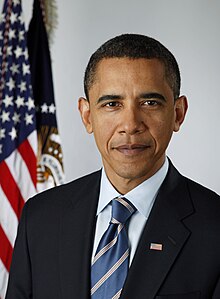 |
44th President of the United States
Assumed office:
January 20, 2009 |
Barack Hussein Obama II (born August 4, 1961) is the
44th and
current President of the United States. He is the
first African American to hold the office. Obama previously served as a
United States Senator from
Illinois, from January 2005 until he resigned following his victory in the
2008 presidential election.
Born in
Honolulu,
Hawaii, Obama is a graduate of
Columbia University and
Harvard Law School, where he was the president of the
Harvard Law Review. He was a
community organizer in Chicago before earning his
law degree. He worked as a
civil rights attorney in Chicago and taught
constitutional law at the
University of Chicago Law School from 1992 to 2004. He
served three terms representing the 13th District in the
Illinois Senate from 1997 to 2004.
Presidents of the United States
